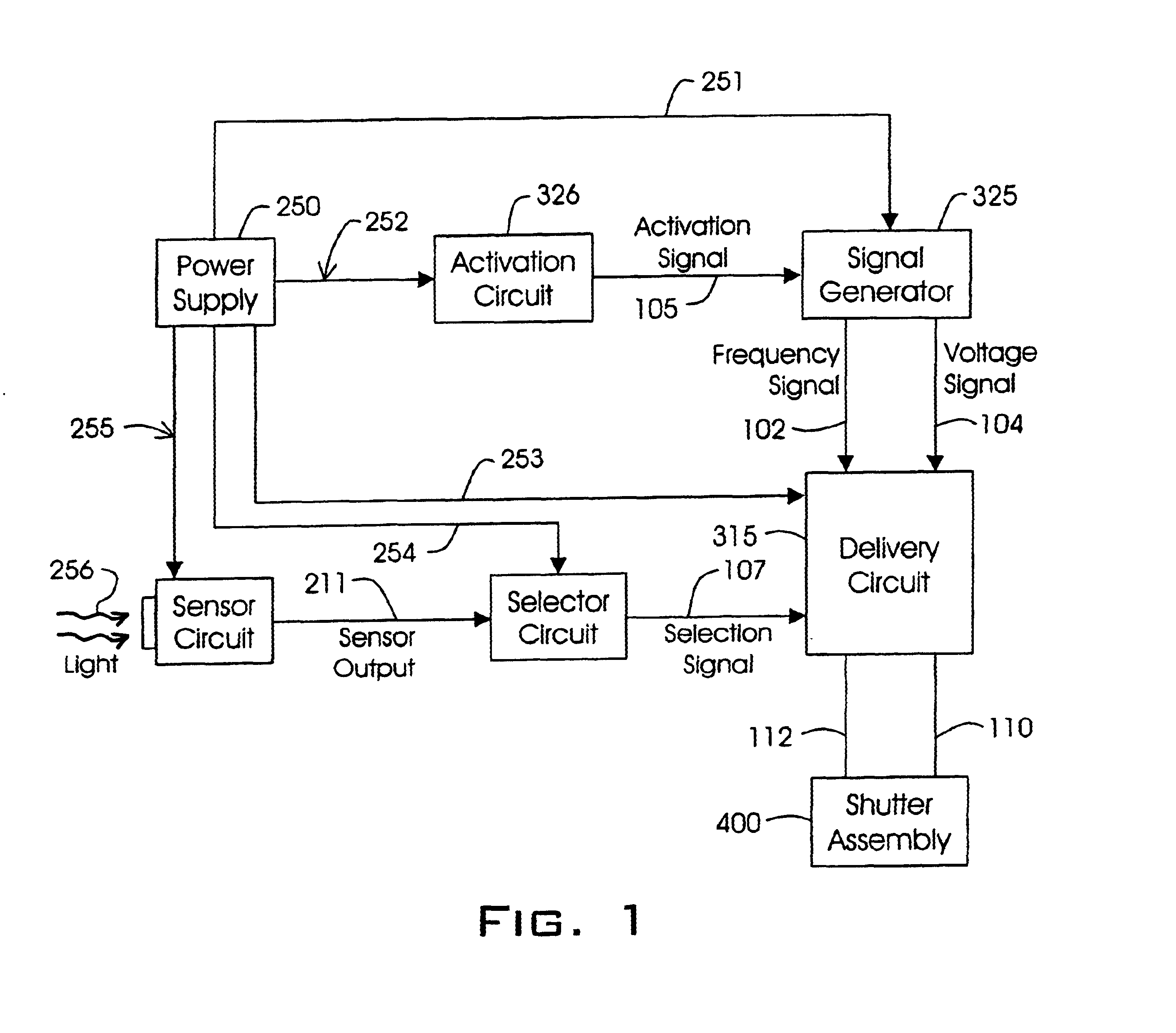Low power phototransistor-based welding helmet providing reduced sensitivity to low intensity light and sharp phototransistor response to high intensity light
a low-power, welding helmet technology, applied in the direction of optical radiation measurement, instruments, spectrophotometry/monochromators, etc., can solve the problems of excessive power consumption, heavy loads still needed, metal can phototransistors are relatively big and bulky, etc., to prolong the battery life of the invention's power supply, improve the efficiency of circuit design, and save energy
- Summary
- Abstract
- Description
- Claims
- Application Information
AI Technical Summary
Benefits of technology
Problems solved by technology
Method used
Image
Examples
Embodiment Construction
A block diagram of the circuit of the present invention is depicted in FIG. 1. As can be seen, a power supply 250 is connected via power lines 251, 252, 253, 254, and 255 to the sensor circuit 200, activation circuit 326, selector circuit 316, signal generator 325, and delivery circuit 315. The power supply 250 furnishes the circuit with the power necessary for operation. Activation circuit 326, selector circuit 316, signal generator 325, and delivery circuit 315 function together to control the shutter assembly 400 depending upon the signals received from power supply 250 and sensor circuit 200.
Activation circuit 326 receives power from the power supply 250 and sends an activation signal to the signal generator 325. Upon activation by the activation circuit, the signal generator 325 generates a frequency signal 102 and a voltage signal 104 and sends the two signals 102 and 104 to the delivery circuit 315. The delivery circuit 315 uses the frequency signal 102 and the voltage signal...
PUM
 Login to View More
Login to View More Abstract
Description
Claims
Application Information
 Login to View More
Login to View More - R&D
- Intellectual Property
- Life Sciences
- Materials
- Tech Scout
- Unparalleled Data Quality
- Higher Quality Content
- 60% Fewer Hallucinations
Browse by: Latest US Patents, China's latest patents, Technical Efficacy Thesaurus, Application Domain, Technology Topic, Popular Technical Reports.
© 2025 PatSnap. All rights reserved.Legal|Privacy policy|Modern Slavery Act Transparency Statement|Sitemap|About US| Contact US: help@patsnap.com



